
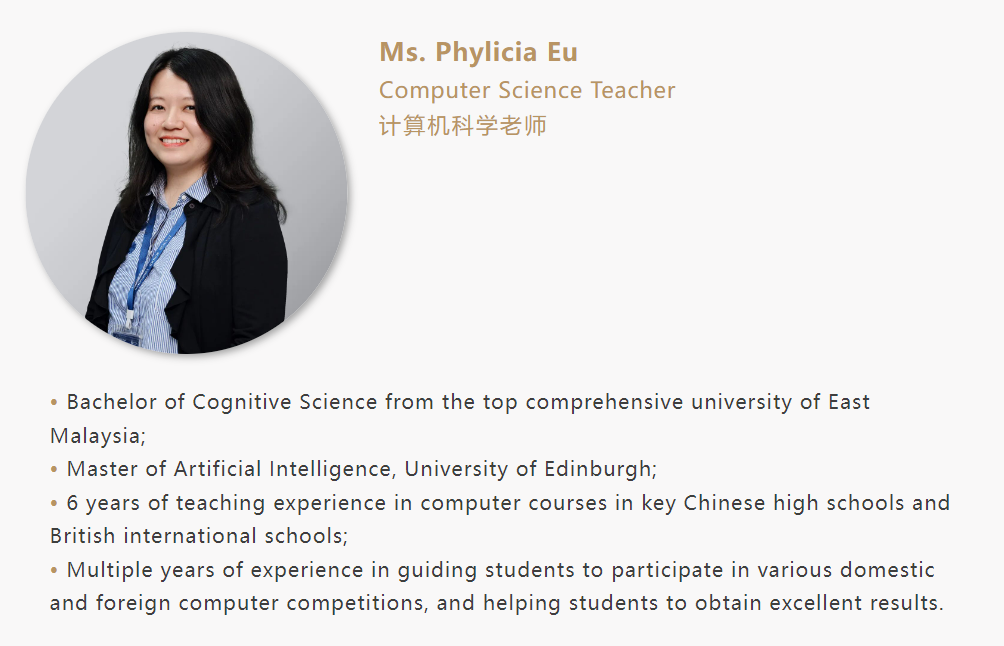
Recently, students learned web design with HTML and CSS as well as the manipulation of electronic components with Arduino Uno. Year 10 and Year 11 students learned the principles of Computer Science and developed computational thinking skills as they code with Python programming language on IGCSE Computer Science classes.
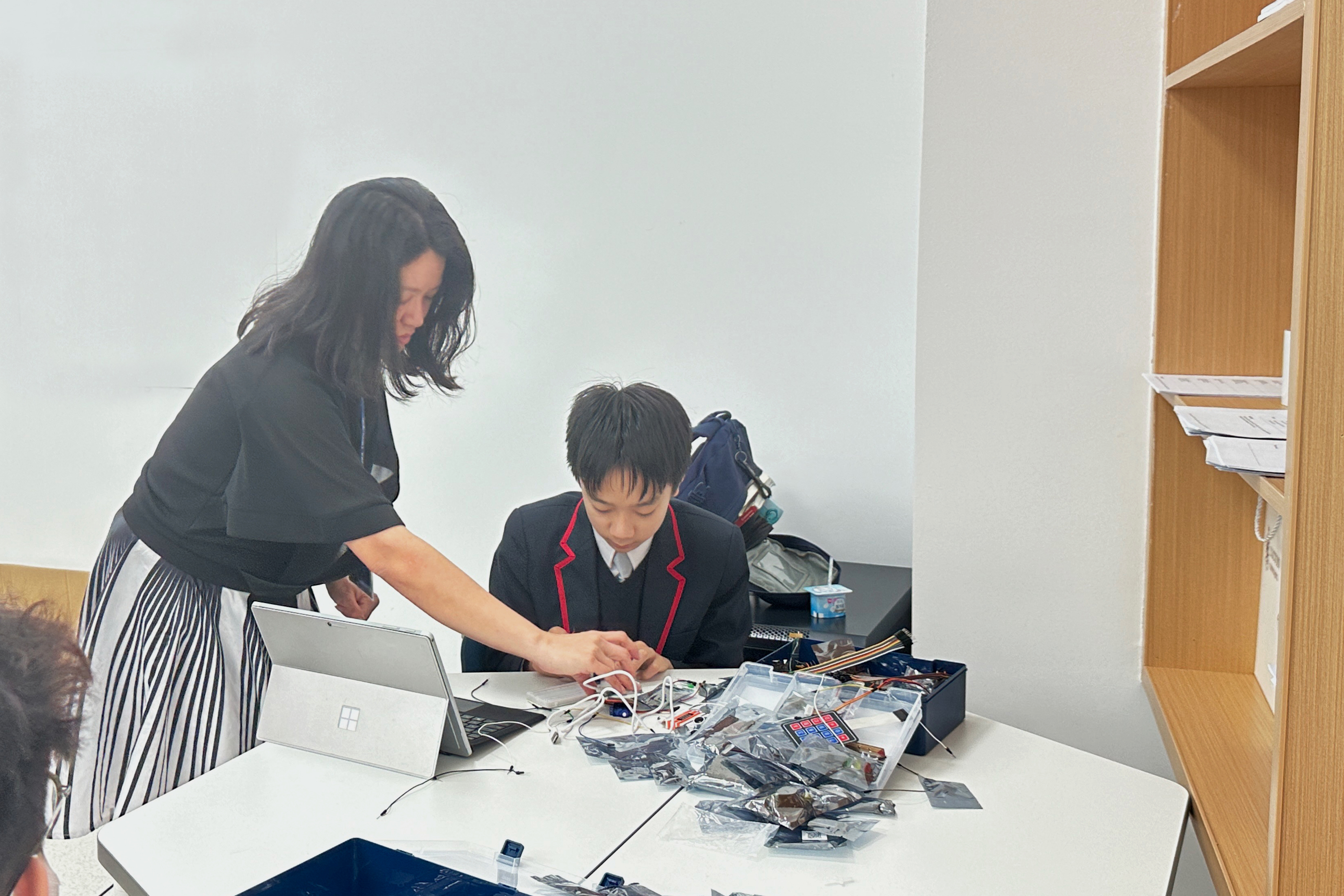
Students in Ms. Eu's lesson have been working on some Arduino projects recently. Arduino Uno is a microcontroller board that consists of a USB interface, 14 digital input or output pins, 6 analog pins and an Atmega328 microcontroller.
To make computing education more inclusive and motivating, students should have opportunities to create with computing devices that have direct impact on their lives and communities. With this aim in mind, we are using the student-centered approach in our lesson where we emphasise on active learning. Students can create personally meaningful computing artifacts.
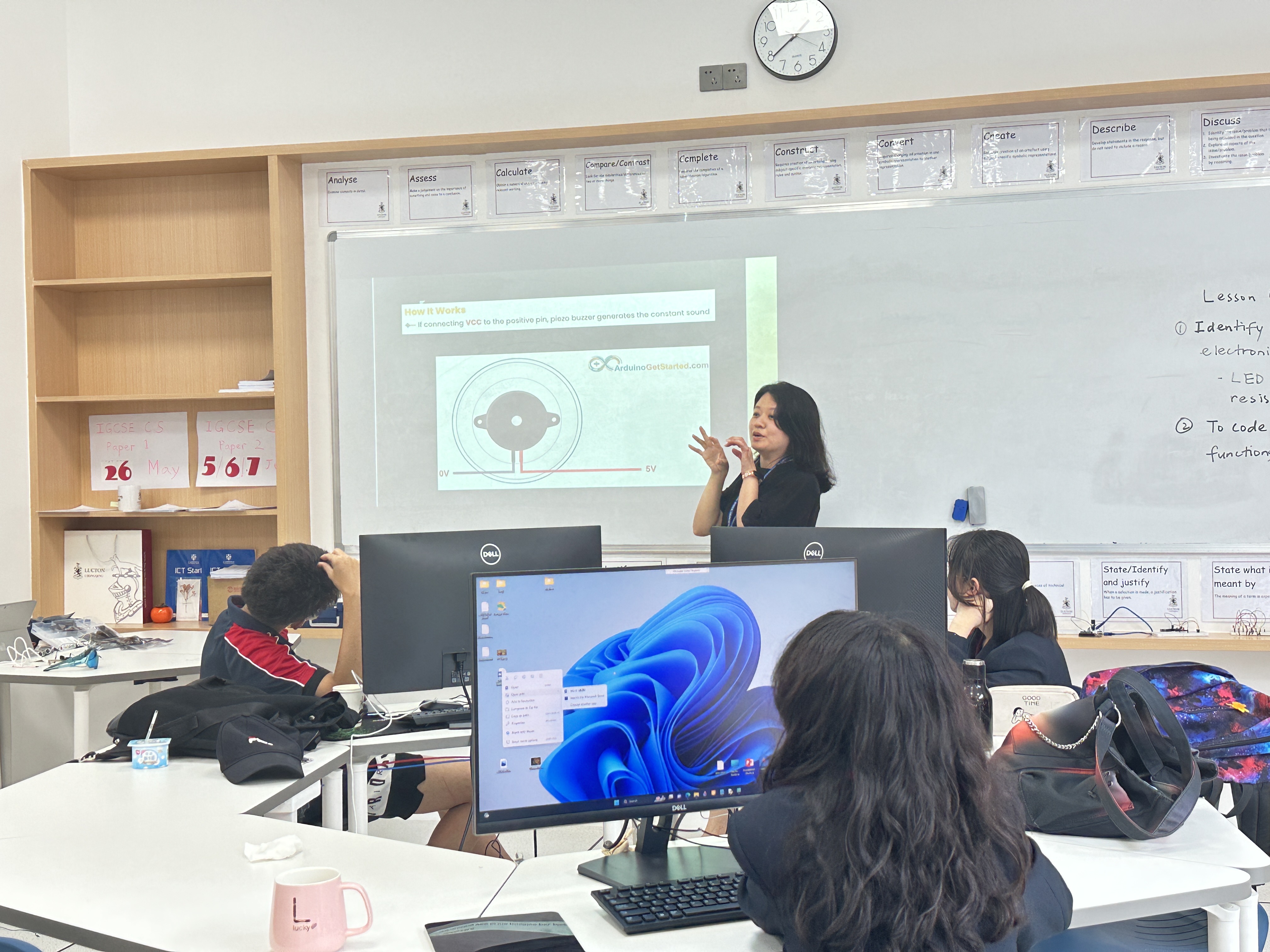
Firstly, Ms. Eu showed the final model to the students in order to foster students' interest. In this lesson, students explored the use of passive buzzer, i.e., Piezo buzzer in Arduino Uno project that will play the Super Mario tune. Next, students identified the electronic components – Piezo buzzer, Arduino Uno board, breadboard and jumper wires needed in the project. In the process, students practiced computational thinking skill through algorithmic thinking and abstracting.
After the students have finished setting up the circuit, they will code in Arduino IDE. They should be able to code with variables, tone() and noTone() functions. Through this, we developed students' computational thinking ability through coding. Lastly, students should be able to articulate what they have created and empower them to be digital creators.
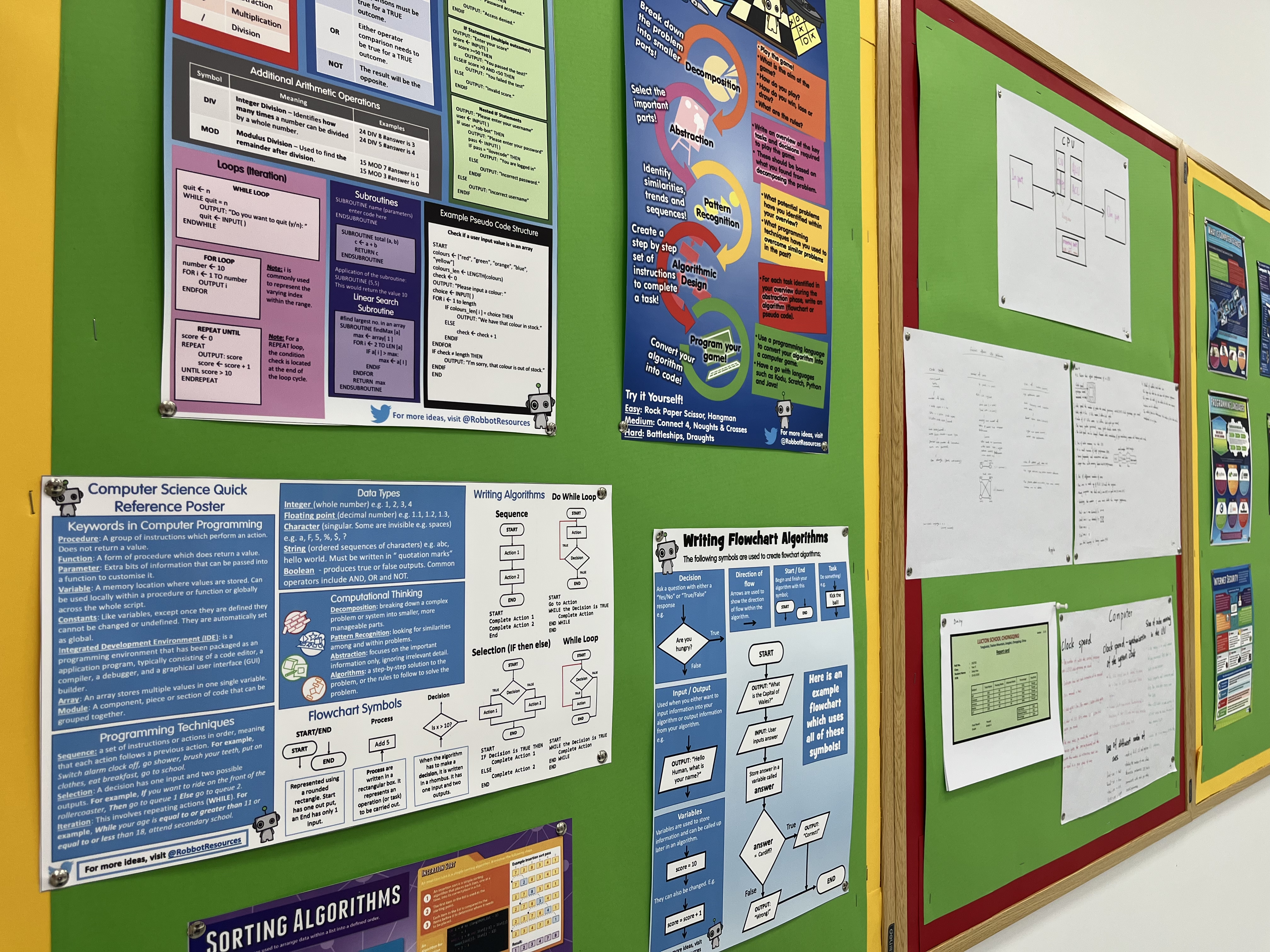
As computational thinking (CT) is recognised as a basic skill for the 21st century, we are promoting ways to enhance CT skills as how students practice CT core competencies in the learning process to develop problem-solving thinking. During the ICT lessons, students can develop and cultivate CT through programming, because this involves concepts such as decomposition, pattern recognition, and abstraction, all of which teach students to solve problems.

• The circuit connection was shown on the board and the students were asked to identify the electronic components that are needed in the lesson.

• Ms. Eu showed a student how to link the Piezo buzzer to Arduino Uno board.
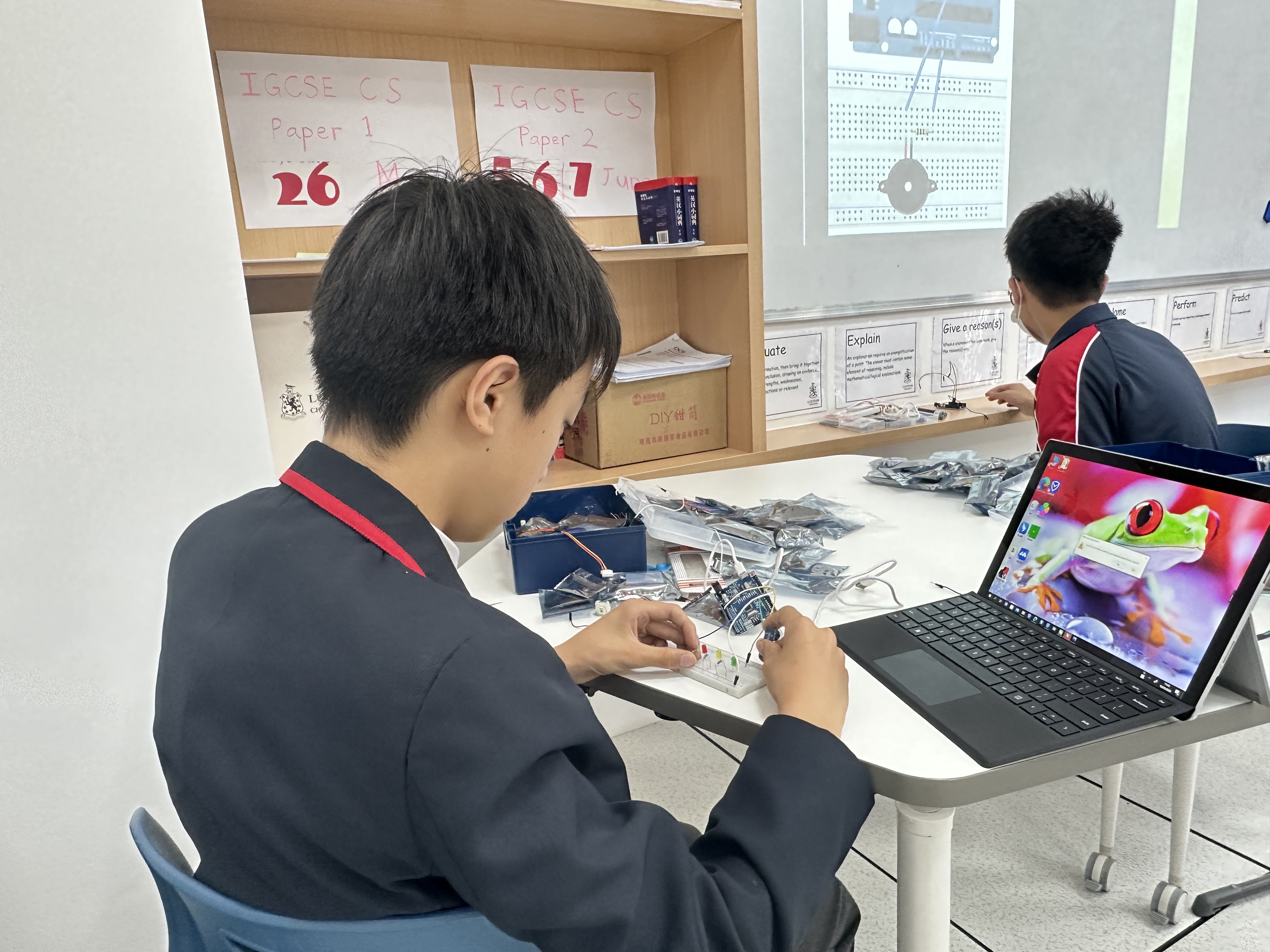
• Some students practiced autonomous learning where they continued with the extended project, working with LED lights and Piezo buzzer.
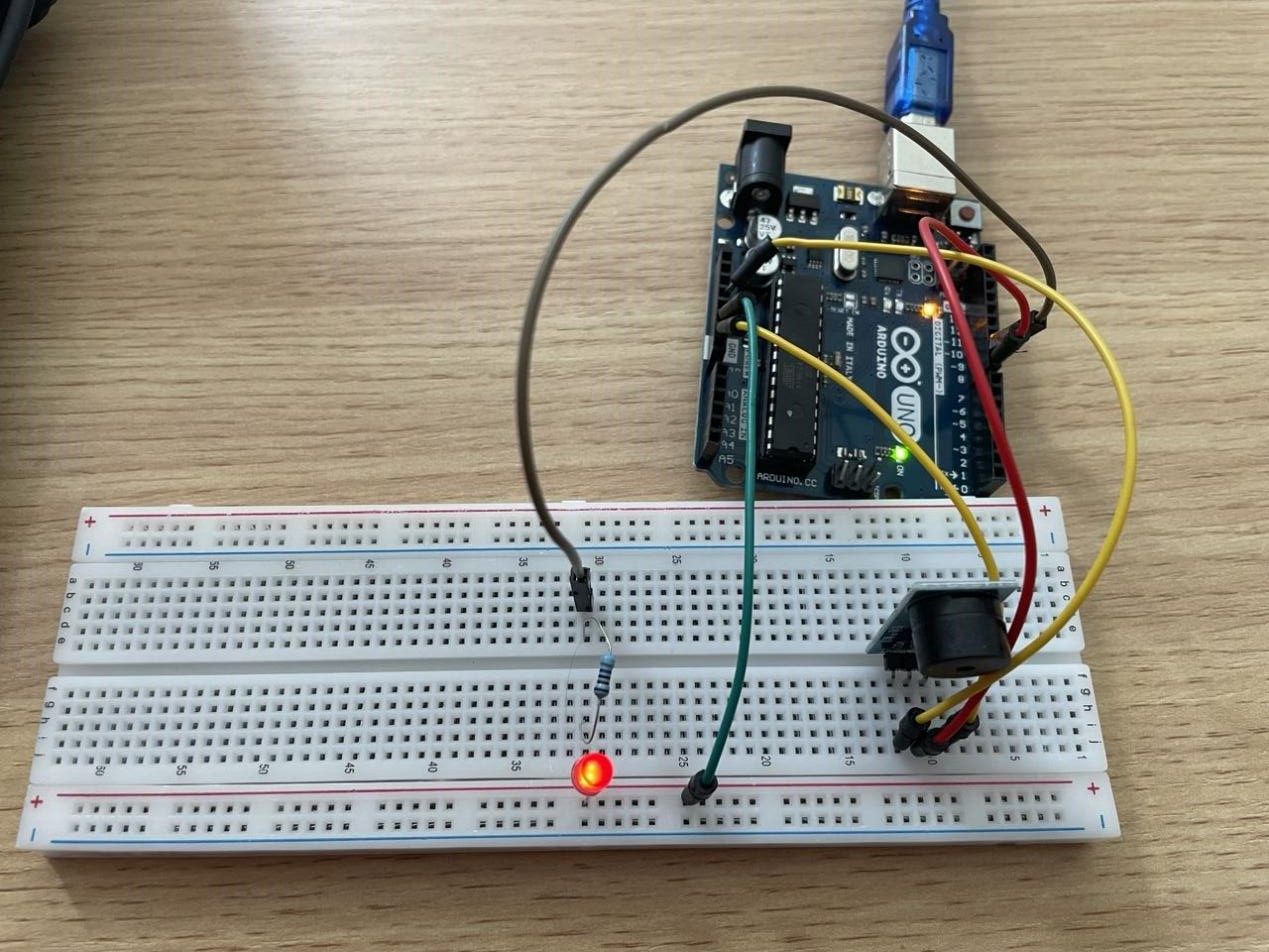
• The final outcome of Arduino Uno project where the Piezo buzzer will play the Super Mario tune and the LED light will blink based on the pitch of the tune.

